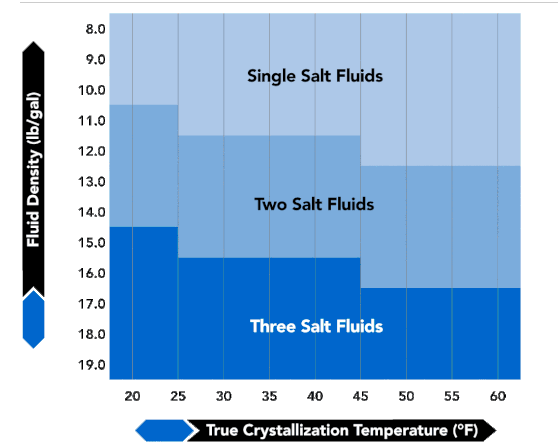Fluid Categories
In reality, planning any completion is an iterative process and will most likely require more than one pass as you gather more information and refine your selection. Using basic design information, true vertical depth, bottomhole pressure, and environmental temperature considerations as outlined in the following sections, you can determine which clear brine fluids are a good match for the conditions.
Low density systems usually consist of single salt fluids, which can range in density from slightly above the density of water, such as 3% potassium chloride (KCl), to as high as 11.6 lb/gal calcium chloride (CaCl2). Unique formation properties or concerns about the compatibility of conventional brines with formation water may suggest the use of sodium bromide (NaBr), calcium bromide (CaBr2), sodium formate (NaO2CH), potassium formate (KO2CH), or cesium formate (CsO2CH) - the latter three of which are halide free, containing no chloride or bromide.
Midrange density fluids, 11.7 lb/gal to 15.1 lb/gal, are typically two salt mixtures of calcium chloride (CaCl2) and calcium bromide (CaBr2). The boundary between two and three salt fluids in Figure 2 is influenced by the lower of the expected atmospheric temperature or mudline temperature. In many cases, the lowest temperature in the entire fluid column is at the ocean floor (mudline) where temperatures can routinely be less than 40°F. This temperature will often dictate the CBF category that is available to you.
FIGURE 2. Fluid Categories
